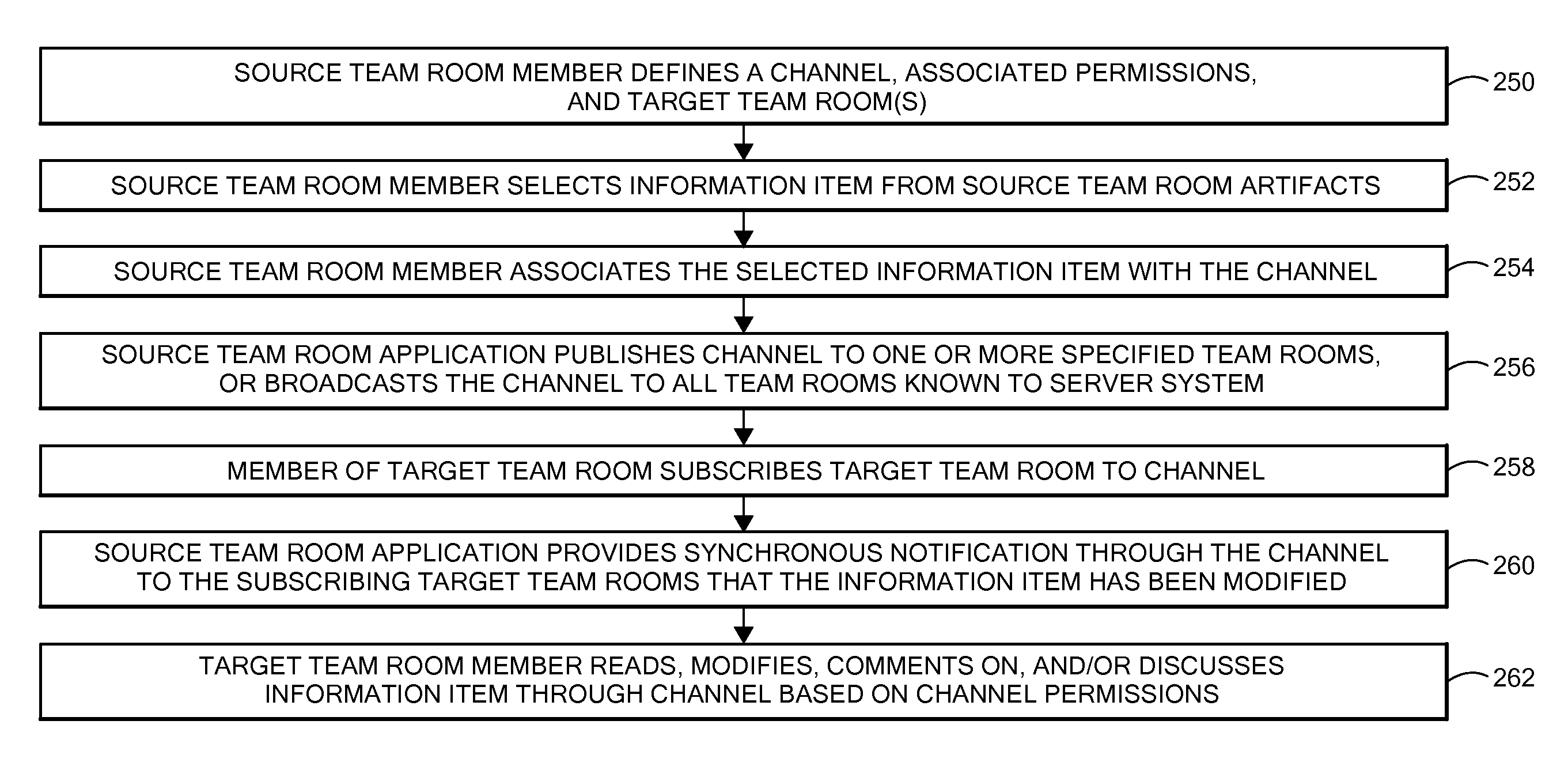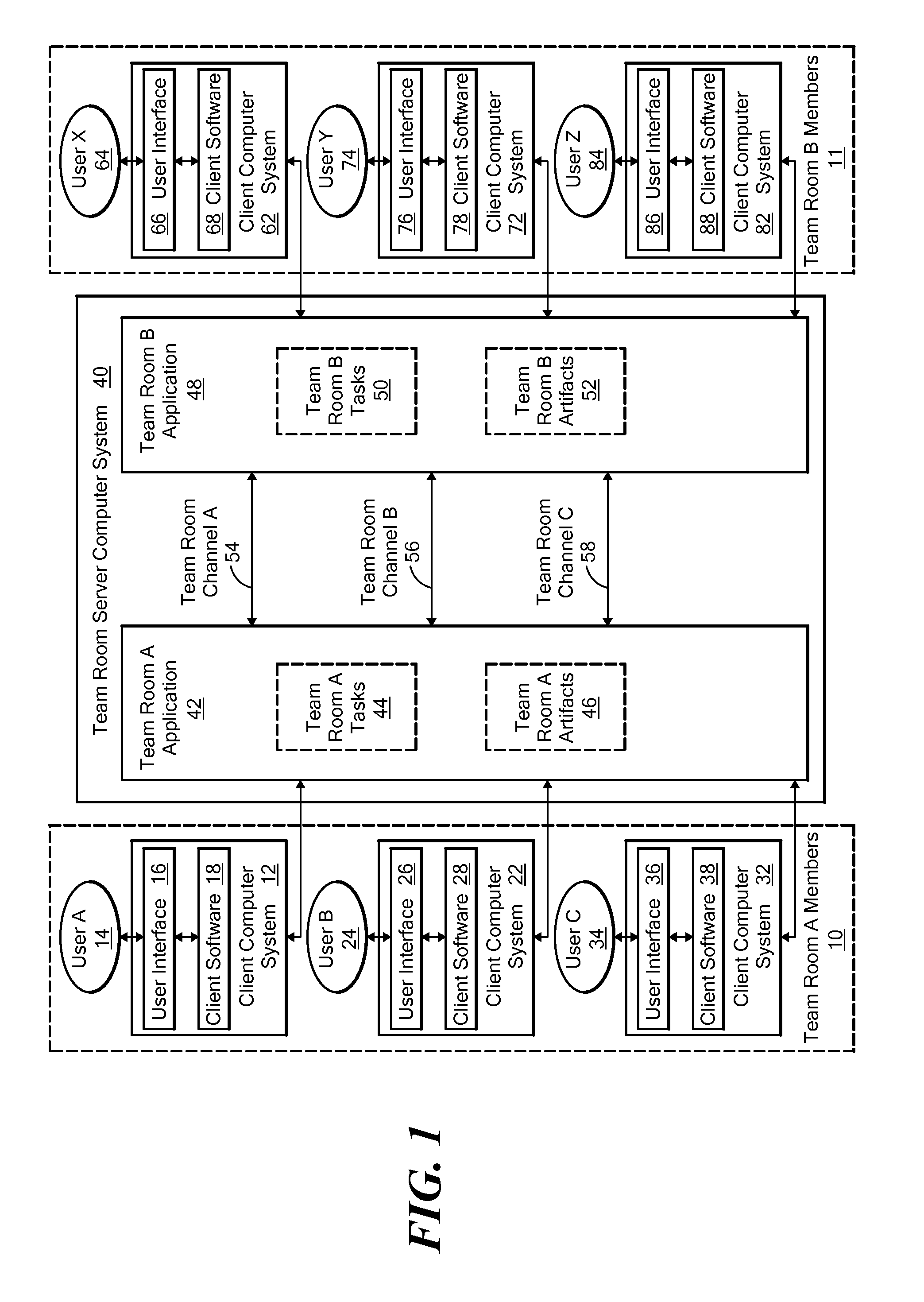Selective information sharing across team spaces
a technology of team space and information sharing, applied in the field of computer supported collaborative work, can solve the problems of team room content finding the “all or nothing” approach very undesirable, exposing all of the team room contents, and affecting the work efficiency of the team room
- Summary
- Abstract
- Description
- Claims
- Application Information
AI Technical Summary
Benefits of technology
Problems solved by technology
Method used
Image
Examples
Embodiment Construction
[0020]FIG. 1 is a block diagram showing hardware and software components in an execution environment for an illustrative embodiment of the disclosed system. As shown in FIG. 1, the members 10 of a Team Room A include a User A 14, a User B, 24, and a User C 34. User A 14 is provided a User Interface 16 on Client Computer System 12 by Client Software 18, User B 24 is provided a User Interface 26 on Client Computer System 22 by Client Software 28, and User C 34 is provided a User Interface 36 on Client Computer System 32 by Client Software 38. The members 11 of Team Room B are shown including User X 64, User Y 74 and User Z 84. User X 64 is provided a User Interface 66 on Client Computer System 62 by Client Software 68, User Y 74 is provided a User Interface 76 on Client Computer System 72 by Client Software 78, and User Z 84 is provided User Interface 86 on Client Computer System 82 by Client Software 88.
[0021]The client computer systems 12, 22, 32, 62, 72 and 82 of FIG. 1 are communi...
PUM
 Login to View More
Login to View More Abstract
Description
Claims
Application Information
 Login to View More
Login to View More - R&D
- Intellectual Property
- Life Sciences
- Materials
- Tech Scout
- Unparalleled Data Quality
- Higher Quality Content
- 60% Fewer Hallucinations
Browse by: Latest US Patents, China's latest patents, Technical Efficacy Thesaurus, Application Domain, Technology Topic, Popular Technical Reports.
© 2025 PatSnap. All rights reserved.Legal|Privacy policy|Modern Slavery Act Transparency Statement|Sitemap|About US| Contact US: help@patsnap.com



